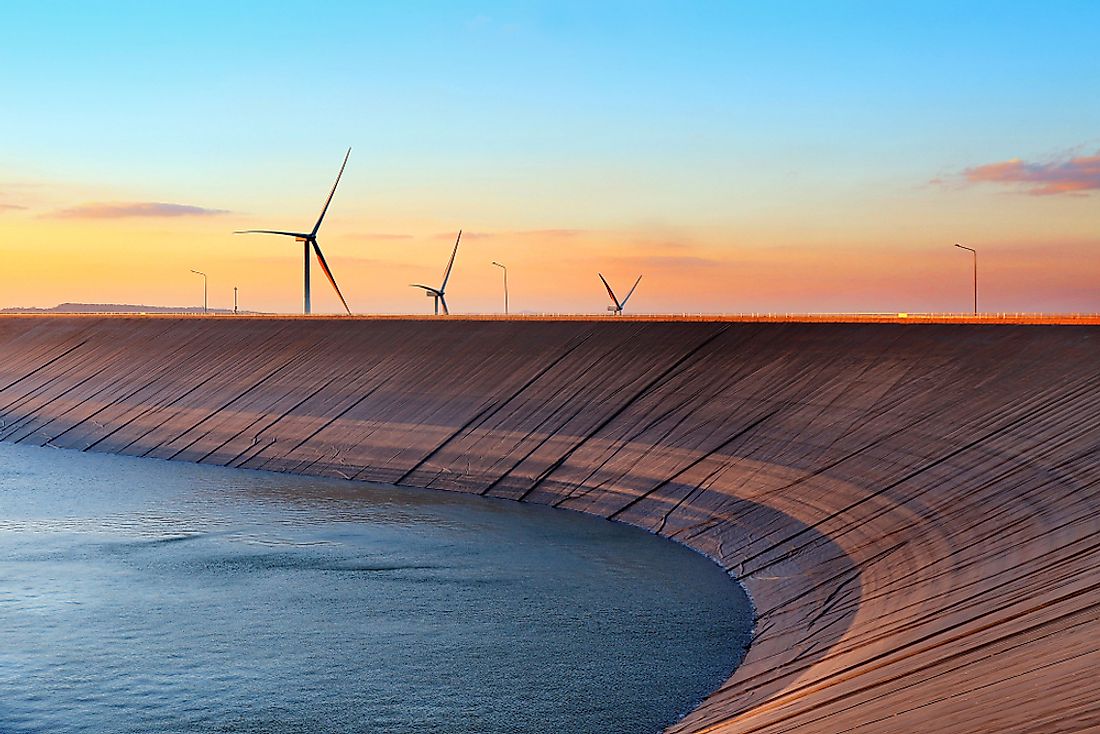What Are The Differences Between A Lake And A Reservoir?

From the shoreline, reservoirs and dams can appear very similar. This is not surprising given that a reservoir is actually an artificial lake. Additionally, the physics, chemistry, and biology of lakes and reservoirs are also similar. However, despite these similarities, there are also important differences between lakes and reservoirs. The most obvious differentiation between the two is the formation process, as lakes are formed naturally formed, while reservoirs are man-made.
Lakes
A lake is a large body of water body surrounded by land. Lakes are formed by depressions that either collect water from nearby rivers or sip water from underground. They are not part of oceans and are therefore distinct from lagoons. Lakes are primarily found in rift zones, mountainous areas, and areas that experienced glaciation. They are not evenly distributed across the planet due to the chaotic nature of the world drainage pattern. Despite their size, lakes are temporary and subject to geologic time scales, as they will eventually fill up with sediments and spill out. Most of Earth’s lakes are freshwater and are located in the Northern Hemisphere. Canada contains about 2 million lakes, including 31,500 that have an area greater than 1.2 sq mi, while Finland contains more than 56,000 lakes that are larger than 110,000 sq ft. Most lakes are drained by at least one river or stream that maintains its average water level by removing excess water. Other lakes lack a natural outflow and only lose water by underground seepage or evaporation. The Caspian Sea is the world's largest lake in terms of area, while Lake Superior is the largest freshwater lake. Lake Baikal in Siberia is the largest freshwater lake by volume, as well as the deepest and oldest lake in the world. Lake Tanganyika in Eastern Africa is the longest lake, with a total length of 410 mi.
Reservoirs
Reservoirs are artificial or man-made lakes formed by constructing dams along flowing rivers. Upon completion, water accumulates behind the dam and creates a basin. A dam can also be built on the outflow of a lake to take advantage of excess water. Reservoirs are often built in areas with few lakes or where the water quality is unfit for human consumption. Lakes serve a similar purpose as reservoirs, but the latter are built to address a persistent problem such as the lack of water for domestic, agricultural, and industrial use, commercial fishing, power generation, recreation and sports, navigation, and flood control. The building of reservoirs is not new, as they were built thousands of years ago in China to prevent flooding, as well as in Ancient Egypt and Mesopotamia for irrigation purposes. There are approximately one million dams worldwide, and roughly 50,000 exceed a height of 50 ft. Additionally, reservoirs have proven so effective that nearly all major rivers on the planet have been dammed at some point in time.
About 30% of the water that would naturally flow into the oceans is held up in dams. Despite their immense contribution, reservoirs also have a negative impact, especially on the environment. By altering the natural course of rivers, dams have stopped the flow of sediments to the ocean and hindered the free movement of marine animals, especially fish.
Differences Between Lakes and Reservoirs
The formation process determines the form and shape of lakes. As naturally formed bowl-shaped depressions, lakes tend to be deepest at the center and are more round in shape compared to reservoirs. Additionally, the shallowest point of a lake is located near its outflow. In contrast, the deepest part of a reservoir is closest to the dam, while the shallowest point is further upstream. As the water level rises, it begins to flow back up the river, creating a dendritic shape. Reservoirs with high banks are longer and narrower, while those with lower banks are wide and shallow. Spillways are constructed to prevent overflow and ease pressure off the dam. Global warming has impacted human interaction with both dams and reservoirs. Lakes are also drying up and becoming less dependable, necessitating the construction of reservoirs. Lakes experience a natural overflow that is predictable and avoidable, but reservoir failures have caused devastating damage. For example, a typhoon in 1975 damaged the Banqiao Reservoir Dam in China, resulting in flooding that caused more than 170,000 deaths.











